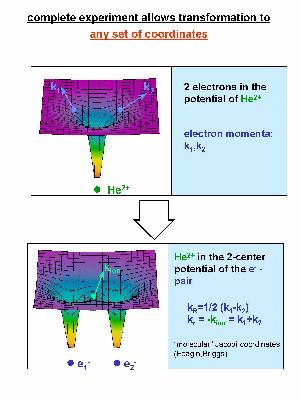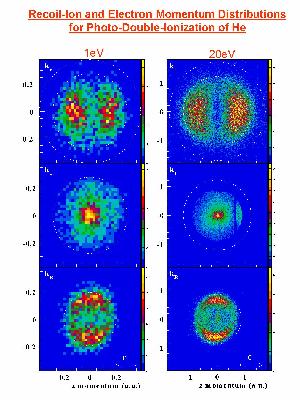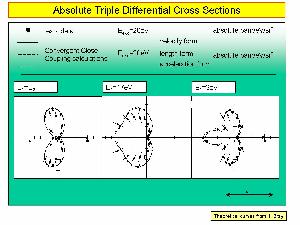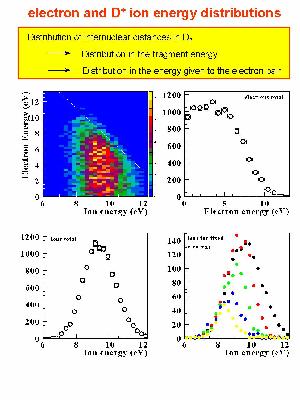
 |
Photoionization Studied With COLTRIMS |
One of our more wide-ranging collaborative research efforts involves studying photoionization at Lawrence-Berkeley Lab's Advanced Light Source, or ALS. Physicists from Kansas State, the University of Frankfurt, Western Michigan University and other institutions are working together to explore the dynamics of photoionization. The experiments are made possible by the bright beams of ultraviolet light generated at the ALS (a synchrotron light source operated as a Department of Energy user facility,) and an innovative new experimental technique called COLTRIMS (COLd Target Recoil Ion Momentum Spectroscopy). |
|
| Single Ionization Recoils | |
|---|---|
| Our project at the ALS involves using Cold Target Recoil Ion Momentum Spectroscopy to determined kinematically complete, or nearly complete, final state populations of multi-particle continuum states produced in double ionization of He , Ne and D2. This figure shows the recoil momentum spectrum for single ionization of He projected into a plane orthogonal to the photon beam direction. The rings correspond to leaving the He+ in various final states. |

Figure 1 |
| Use of Jacobi Coordinates | |
 Figure 2 |
For double ionization of He (as well as single ionization), the results are kinematically complete. This means that the momentum spectra of the two outgoing electrons can be plotted in any coordinate system. One such system is a set of Jacobi coordinates, in which the variables are the center of mass vector of the electron pair and the relative momentum vector of the two electrons. These are the coordinates used in the composite plots of figure 3. |
| Distributions of Momenta from Photo Double Ionization | |
| Distributions of momenta from photo double ionization of He at two photon energies. The spectra are presented in terms of the Jacobi coordinates shown in figure 2. The most striking aspect of these data are that they show that the relative motion of the two electrons is preferentially aligned perpendicular to the polarization of the incident photon. This behavior is present over a wide range of photon energies. |  Figure 3 |
| Polar Plots of Absolute Differential Cross Sections | |
 Figure 4 |
Polar plots of absolute differential cross sections (differential in the energies and angles of both electrons) for selected values of the energy and angle of one electron. The data are plotted in terms of laboratory energy and angular coordinates of the second electron. They are compared to theoretical calculations by Bray et al. |
| Energy Distributions of Recoil Ions & Electrons | |
| The energy distributions of recoil ions and electrons from photo double ionization of D2 for a photon energy of 58.8 eV. This energy is 7 eV above the Franck-Condon threshold for double ionization of the molecule. The electron energy distribution is nearly uniformly distributed for a given ion energy, but the total energy available to ions and electrons is constrained to lie inside a sum energy of 27.1 eV. This constraint is revealed by a diagonally downward sloping edge seen in the upper left-hand figure. Further results from this experiment showed the dependence of the electron emission angle on the polarization and molecular alignment axes. | 
Figure 5 |
| Publications | |
| |
| |
|
The latest results are
now available, as are video clips from work done in
2000. Further information on this research is available from Professor Lew Cocke. |
|
| Last updated on Wednesday, 20-Jul-2005. |